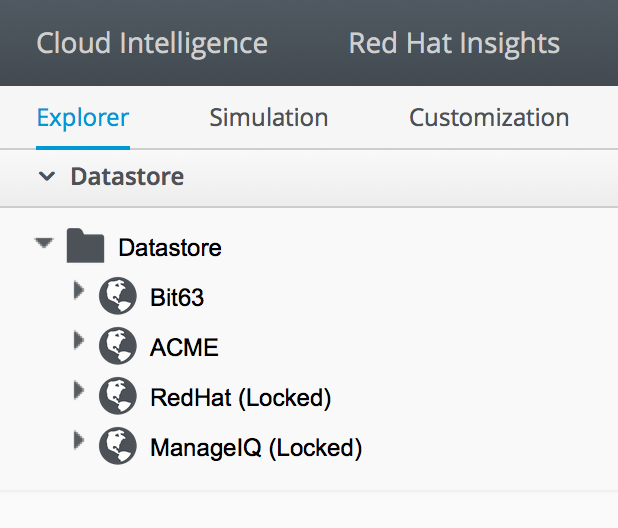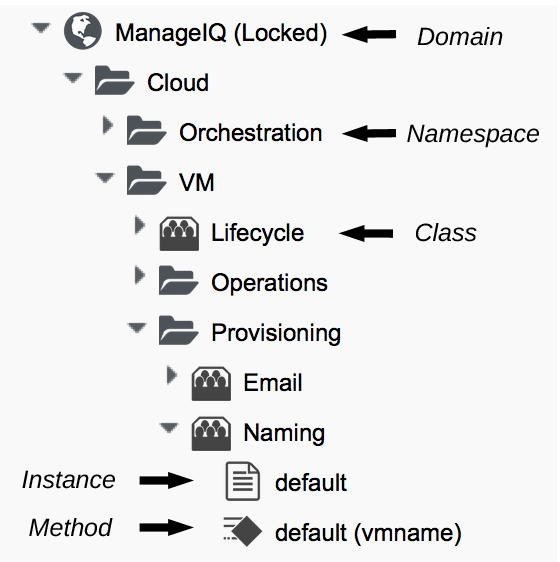Chapter 2. Introduction to the Automate Datastore
When we use the Automate capability of CloudForms, we write scripts in the Ruby language and use objects that the CloudForms Automation Engine makes available to us. The CloudForms Web User Interface (WebUI) allows us to access the Automate functionality via the Automate top-level menu (see Figure 2-1).

Figure 2-1. Automate top-level menu
The Automate Explorer
The first menu item that we see takes us to the Explorer. This is our visual interface into the Automate Datastore, and it contains the various kinds of Automate objects that we’ll use throughout this book (see Figure 2-2).

Figure 2-2. Automate Explorer
Before we start our journey into learning CloudForms Automate, we’ll take a tour of the Automate Datastore to familiarize ourselves with the objects that we’ll find there.
The Automate Datastore
The Automate Datastore has a directory-like structure, consisting of several types of organizational units arranged in a hierarchy (see Figure 2-3).

Figure 2-3. Automate Datastore icon styles
Next, we’ll look at each type of object in more detail.
Domains
A domain is a collection of namespaces, classes, instances, and methods. ...
Get Mastering CloudForms Automation now with the O’Reilly learning platform.
O’Reilly members experience books, live events, courses curated by job role, and more from O’Reilly and nearly 200 top publishers.

